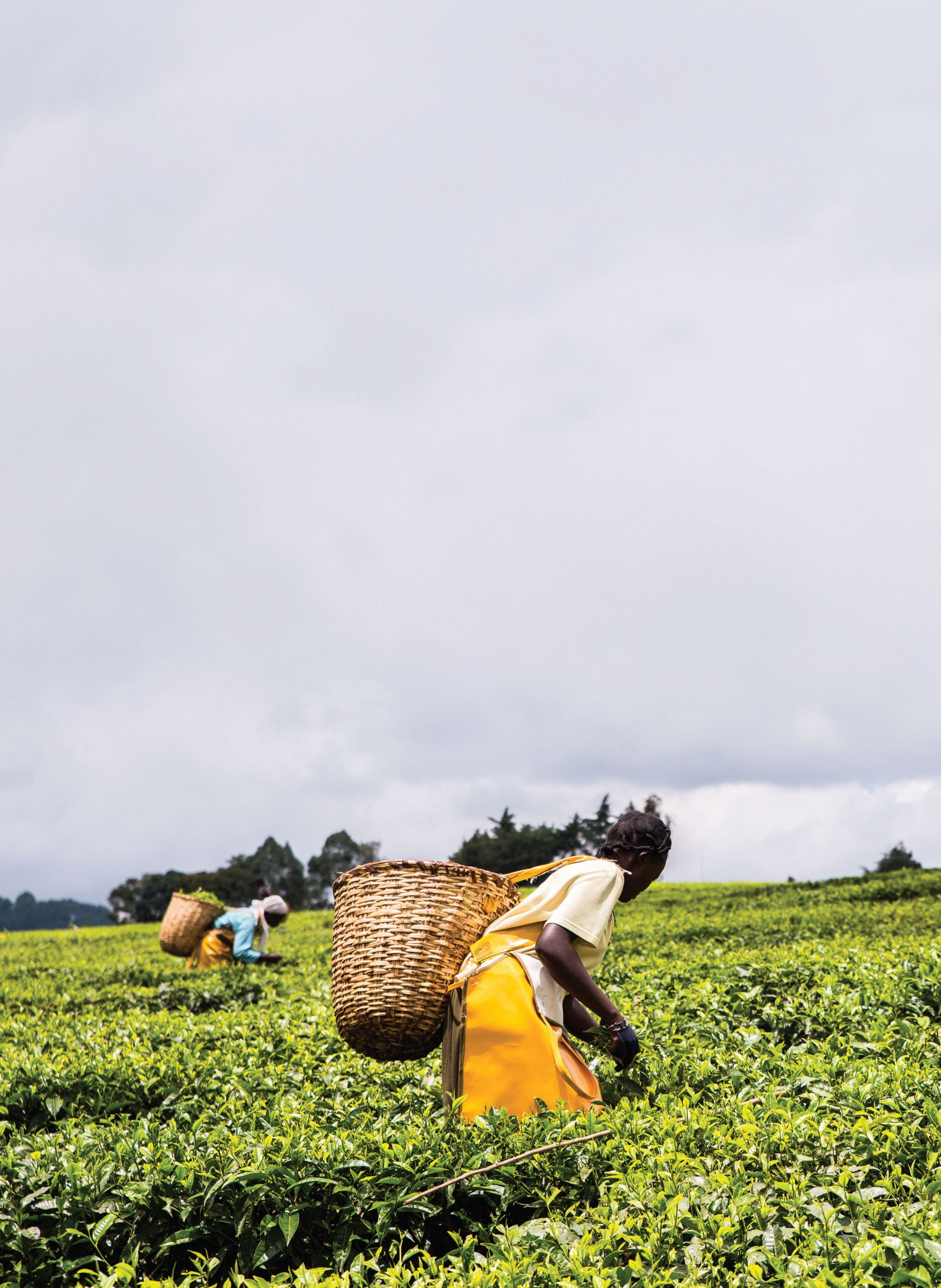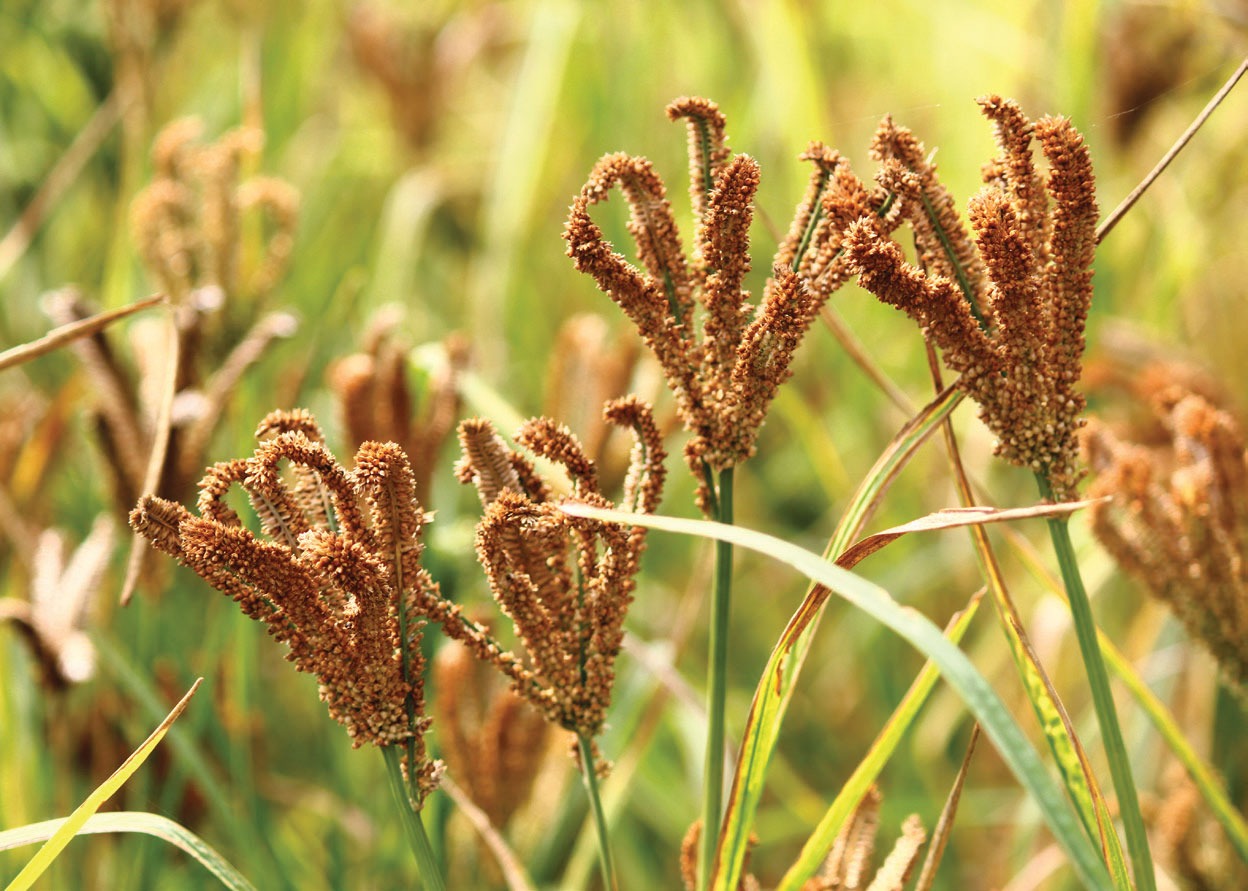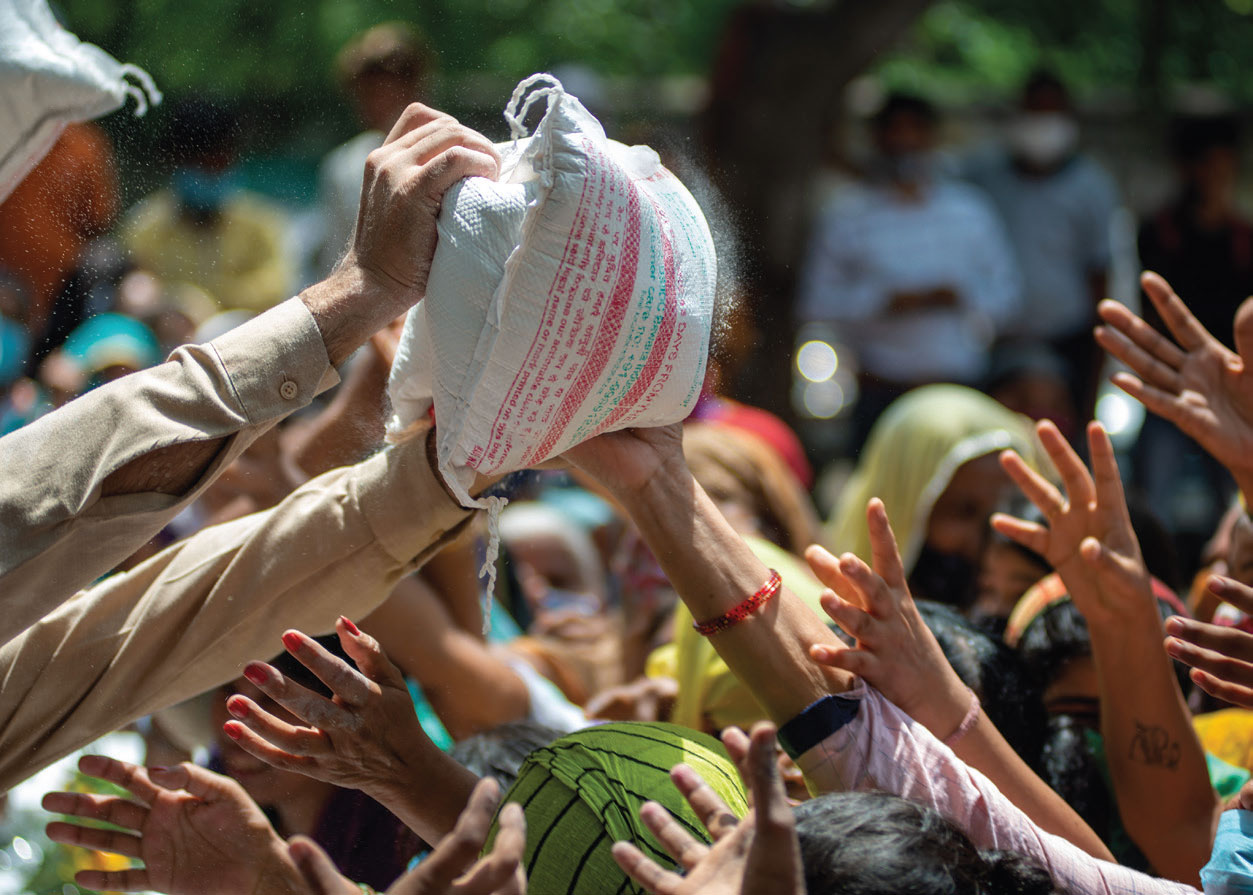Especially since the war in Eastern Europe, food security is an increasing worry for governments the world over, with the UN warning that tens of millions could slide towards starvation over the next year. Amid this ominous backdrop, however, there are plenty of paths forward, from cultivating new vegetables to exploiting big data. That’s shadowed by a rising appreciation that business can help keep us all fed. Andrea Valentino talks to Tania Strauss, head of strategy and global projects, food system initiative at the World Economic Forum, to understand the scale of the world’s food challenges, how new crops can ease the shortfalls sparked by climate change – and to what extent private enterprise can counteract the growing insularity of governments and politicians. 20 Chief

Ukraine has always been Europe’s pantry. Even during the time of the tsars, the thick black soil between the Carpathians and the Caucasus produced most of the Russian Empire’s sugar beet and much of its corn. This dominance persisted after the arrival of the communists. At its height, the so-called Ukrainian Soviet Socialist Republic provided Moscow planners with around a quarter of their grain.
Nowadays, Ukraine produces more grain than the entire European Union and supplies about half the world’s sunflower oil. In all, the country now boasts 104 million acres of agricultural land, an area comfortably vaster than Italy. At least, it did. For even as Ukrainian tractors and harvesters keep trundling across the steppe, the country’s bounty is disappearing. With large parts of Ukraine more charnel house than breadbasket, agricultural production in the country has dropped by upwards of 25%. And even where farming persists, delivering produce to markets has proved challenging, with railways shattered and ports like Odessa blockaded and mined. What happens in Ukraine, in other words, could have enormous consequences thousands of miles away. Take Tunisia, a country that relies on Ukraine for about 50% of its wheat. Or Egypt, which relies on Ukrainian grain almost as much and where bread is sold at a discount to preclude civil unrest. If Ukraine were the only problem facing the global food network, that would be enough. But look at the numbers and it’s obvious that Europe’s newest war is simply part of a far bigger difficulty. Among other things, estimates suggest that we’re going to have to feed an extra two billion people by 2050 and the demand for food will be 56% greater than in 2010. Combined with the varied pressures of climate change, and it’s easy to see how today’s food crisis could become tomorrow’s food catastrophe, as demand outstrips supply and starvation beckons.

Finger millet is being viewed as a crop that could ease global reliance on wheat.
To be sure, the state has a role to play here. Just recently, in Ukraine, Turkey helped negotiate an agreement between Moscow and Kyiv to ensure corn could leave Odessa. But for some experts, that’s not enough. They argue, instead, that business should also do its part. “The private sector brings skills and resources to address these problems,” says Tania Strauss from the food systems initiative at the World Economic Forum (WEF). “I think this is understood – but undertapped in the food sector.” From developing new types of agriculture, to poking politicians into taking more decisive action, Strauss says intelligent public-private partnerships are destined to change the food we eat and how it’s grown. It’s certainly a plausible thesis – though whether much can get done at a time of political fragmentation remains hazy.
Eating our words
Lethal food shortages haven’t been a problem across most of the developed world for years. The last peacetime famine in England happened before the Civil War, while North America has mostly avoided anything similar since the 1840s. Turn your gaze further afield, however, and the situation soon becomes grim. An ongoing famine in Yemen has so far killed 85,000 children and an unknown number of adults. Across the water, in Somalia, a 2011 drought snuffed out the lives of nearly 300,000. No wonder, then, that Tania Strauss argues that Ukraine’s grain shortfall was merely the famished canary in the coalmine. “We didn’t need Ukraine to sleepwalk into a food crisis,” she says. “In the case of Ukraine, it’s further exacerbated. But we were already headed towards the situation.”
Even discounting recent disasters around the Red Sea, these struggles can be understood in a number of ways. Consider, for instance, humanity’s damage to the environment. Between pollution and deforestation, researchers at the University of Sheffield found that the planet has lost a third of its arable land since 1975. Together with more straightforward climate change, which reduces crop yields even as it slashes livestock productivity, and you can easily see how global food difficulties were rising long before Putin’s tanks entered Ukraine. Even worse, Strauss explains that our current farming arrangements could make these climactic pressures worse – hardly astonishing given livestock and agriculture represent around a third of the world’s greenhouse gas emissions.

The world has lost a third of its arable land since 1975, accelerating the threat of famine around the globe.
These vulnerabilities, it goes without saying, could spark famine on a massive scale. According to one recent study, 80 million people are at risk of starvation by 2050 due to climate change, a figure that’ll doubtless rise as the world’s population soars to 11 billion by 2100. Beyond the direct human consequences, Strauss is equally keen to highlight the sociopolitical ones. She gives the example of Egypt, painfully reliant on imported grain supplies, which has already witnessed one revolution this century. Strauss also mentions India, where over one-in-five people subsist on less than $2 a day and where food riots occurred as recently as 2008. And beyond the dangers food can pose to the powersthat- be, Strauss is equally concerned about the financial burden. With poor diets costing the global economy an annual $11trn in healthcare expenses, it’s unsurprising Strauss says we need to be more thoughtful about how food can genuinely support our “daily economic and societal needs”.
Chickens and eggs
For generations, Kenyans have been reliant on a few staple crops: yam, wheat and maize. But visit the country’s agricultural regions these days and you may notice something different sprouting up around you. Covered in small seeds the size of couscous and the colour of pomegranate pips, finger millet is increasingly being grown across western Kenya. Understand the plant’s properties, and the reasons behind the scheme, backed jointly by the WEF and Unilever, soon become clear. Capable of being grown at altitudes of up to 2,000 metres, rich in fibre and iron, robust enough to be stored for over a decade, and crucially able to withstand drought conditions, Strauss describes finger millet as a “quadruple win” for farmers and diners alike. “That’s in terms of commercial viability,” she explains, “but also the health of the soil, and the way they’re growing it and the health of the people who are then consuming a much better product in terms of the nutritional value.”
Nor is the Kenya project alone. On the contrary, explore the WEF website and it soon becomes apparent that Strauss and her colleagues are making similar moves the world over. Grow Asia, for instance, sees the Forum teaming up with US farming giant Cargill, as well as various government agencies, to promote everything from sustainable cashews (Cambodia) to agricultural training (Indonesia). Other WEF schemes encourage collaboration more generally. Bringing together farmers, government officials, businesses and academics, the so-called ‘Food Systems Dialogues’ aim to develop consensus around the challenges and opportunities of global food. Naturally, a cynic might dismiss these globehopping meetups as elitist talking shops, Davos with a suntan. But speak to Strauss and she’s keen to show the practical advantages of bringing different agriplayers together. Describing a meeting she attended with the president of Tanzania, as well as various farming and commercial interests, Strauss says the businesses explained they were only interested in building a certain factory if it had a decent road – even as the politicians refused to build the road until there was a factory. As Strauss says, that’s a perfect example of how the “chicken and egg” of food development can be transcended by “bringing everyone around the table and sharing a bit of that confidence signalling to say ‘actually there’s a level of seriousness here, we’re ready to partner’.”

A food distribution event in New Delhi, India, providing free flour to sex workers.
In a similar vein, Strauss is eager to stress the wider advantages of including corporations like Unilever in our ongoing food conversation. Beyond its usefulness in an age of global warming, finger millet’s resistance to pests makes it reasonably profitable – especially when you sprinkle the fields with new technology. With most states only dipping their toes into data analysis or machine learning and government departments often pursuing their own agendas anyway, she’s convinced that business can really help in areas like soil mapping, using geospatial data to help farmers and agricultural ministers both. Even better, Strauss is convinced that other corporates gain from these initiatives too. “When you talk to the tech CEOs,” she says, “they’re so comfortable with open-source platforms. But when you talk to the food and agri companies, that’s still so foreign to them.”
Food for thought
Ask Strauss about the future, however, and she responds with a smile. Broadly sanguine about the tomorrow of global security, she’s especially keen to underscore the potential of new technologies. Investigating soil quality is one thing – but Strauss imagines a world where whole populations can be fed via test-tube miracles. As an example, she highlights work currently being done in Singapore, the first country to legalise lab-grown meat. Far safer for the atmosphere than its cow-shaped cousin, cultured meat is quickly becoming common elsewhere too, a worldwide industry that’s predicted to hit $25bn by the end of the decade. At the same time, Strauss sees financial space for innovation in the oceans too, suggesting that a so-called ‘blue economy’ of sustainably-harvested fish could also do much to provide healthy, carbonfree nutrition for billions of people.
This is not to say that the situation looks totally bright. Given the scale of the problem, after all, developing a genuinely sustainable global food network would be tough even in the finest geopolitical weather. As it is, the decline of the US as a unipolar power, to say nothing of war in Europe and looming conflict in the Pacific, means that getting states to collaborate is even harder now. Once again, Ukraine is a grim exemplar here, with Moscow flip-flopping on a renewal of the summer’s grain export deal. To be sure, Strauss is far from oblivious to this point. “The hairier it gets, the worse it gets,” is how she vividly puts it, adding that polarisation and self-interested sovereignty are both bound to harden as the climate deteriorates and shortages worsen. Of course, whether even the WEF can do much about that eventuality is decidedly unclear.


